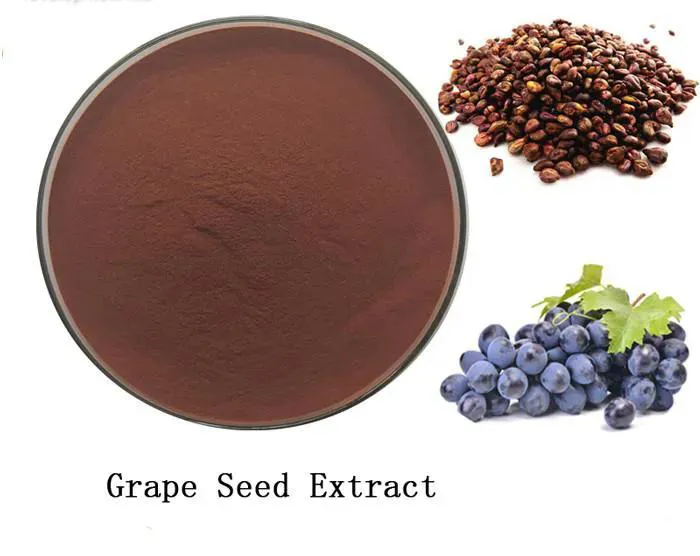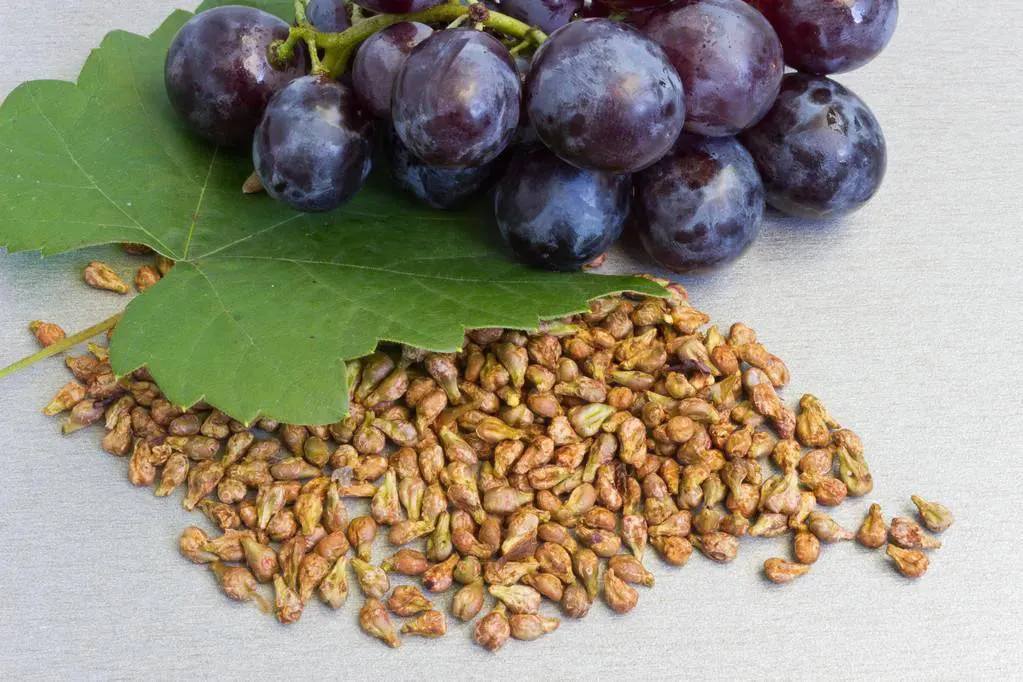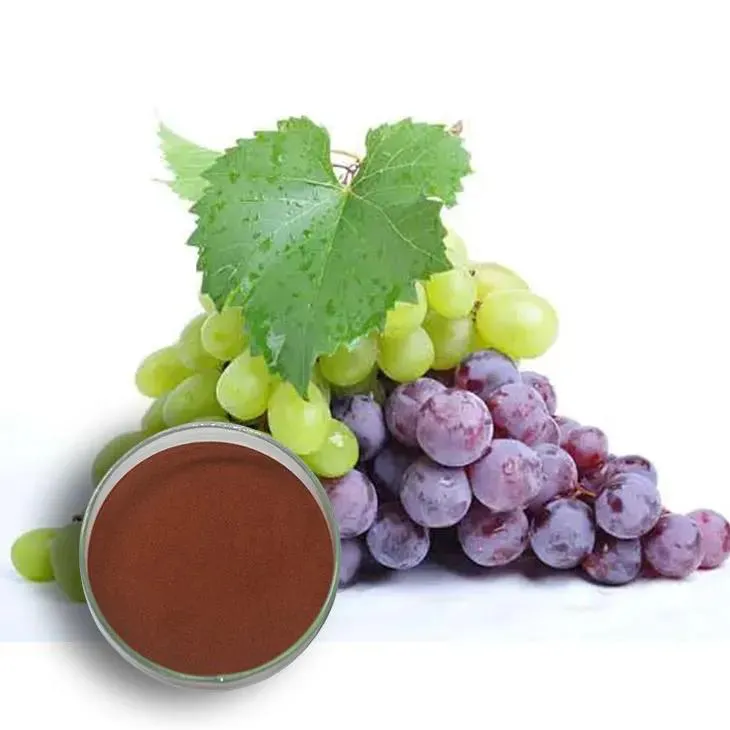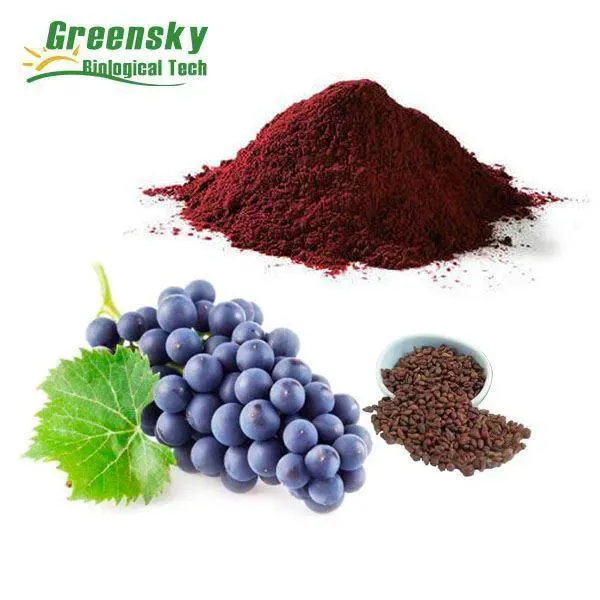- 0086-571-85302990
- sales@greenskybio.com
The Grape Seed Extract Market in America: Unveiling Growth Potential and Future Prospects
2024-07-28

1. Introduction
The Grape Seed Extract market in America is currently experiencing a period of rapid growth and holds substantial potential for further expansion. Grape Seed Extract, which is derived from the seeds of grapes, is a natural substance that has been found to possess a wealth of beneficial properties. These properties have led to its incorporation into a diverse range of industries, making it a valuable commodity in the American market.

2. Properties and Composition of Grape Seed Extract
Grape seed extract is rich in antioxidants, particularly proanthocyanidins. These antioxidants play a crucial role in protecting the body from oxidative stress. Oxidative stress is associated with a variety of health problems, including inflammation and damage to cells. The high antioxidant content of grape seed extract gives it the potential to combat these issues, which is one of the main reasons for its growing popularity.
It also contains other bioactive compounds such as flavonoids, which contribute to its overall health - promoting effects. These compounds work together to provide a range of benefits, from improving cardiovascular health to enhancing skin health.

3. Applications in Different Industries
3.1 Pharmaceuticals
In the pharmaceutical industry, grape seed extract has shown great promise. Its anti - inflammatory properties make it a potential candidate for the treatment of various inflammatory conditions. For example, it may be used in the development of medications for arthritis or other joint - related disorders. Additionally, its antioxidant effects could potentially be harnessed in the prevention of certain chronic diseases, such as heart disease and cancer.
Research is ongoing to explore the full potential of grape seed extract in pharmaceuticals. Some studies have already demonstrated its ability to modulate certain biological pathways that are involved in disease processes. However, more research is needed to fully understand its mechanisms of action and to develop effective pharmaceutical products based on it.
3.2 Cosmetics
The cosmetics industry has also embraced grape seed extract. It is often used in skincare products due to its antioxidant and anti - aging properties. Grape seed extract can help to protect the skin from environmental damage, such as UV radiation and pollution. It may also improve the elasticity and firmness of the skin, reducing the appearance of wrinkles and fine lines.
Many cosmetic companies are incorporating grape seed extract into their formulations, either as a standalone ingredient or in combination with other natural substances. This trend is driven by the increasing consumer demand for natural and effective skincare products. For instance, there are facial creams, serums, and masks that contain grape seed extract as a key ingredient.
3.3 Food and Beverages
In the food and beverage sector, grape seed extract is used as a functional ingredient. It can be added to various products to enhance their nutritional value. For example, it may be included in juices, smoothies, and energy drinks to provide an antioxidant boost.
Some food manufacturers are also using grape seed extract in processed foods, such as baked goods and confectionery. However, there are some challenges in using it in food products, such as ensuring its stability and compatibility with other ingredients. Despite these challenges, the potential market for grape seed extract in food and beverages is significant, especially as consumers become more health - conscious and seek out products with added health benefits.

4. Factors Driving the Growth of the Grape Seed Extract Market in America
4.1 Increasing Consumer Awareness
One of the major factors driving the growth of the grape seed extract market in America is the increasing consumer awareness regarding its health benefits. Consumers are becoming more informed about the role of antioxidants in maintaining good health. They are aware of the potential of grape seed extract to promote heart health, reduce inflammation, and protect against various diseases.
This awareness is being spread through various channels, including health - related media, social media, and educational campaigns. As a result, consumers are more likely to seek out products that contain grape seed extract, whether it be in the form of dietary supplements, cosmetics, or food and beverages.
4.2 Growing Trend of Natural and Organic Products
The growing trend towards natural and organic products in America is also fueling the demand for grape seed extract. Consumers are increasingly preferring products that are made from natural ingredients and are free from synthetic chemicals. Grape seed extract, being a natural substance, fits well into this trend.
Many companies are capitalizing on this trend by marketing their products as "natural" or "organic" and highlighting the presence of grape seed extract as a key selling point. This has led to an increased demand for grape seed extract - containing products, not only in the health - conscious consumer segment but also among mainstream consumers.

5. Research and Development: Uncovering New Applications
Continuous research and development in the field of grape seed extract are uncovering novel applications for this versatile substance. Scientists are exploring its potential in areas such as neurodegenerative diseases, diabetes, and immune system modulation.
For example, some preliminary studies suggest that grape seed extract may have a role in protecting the brain from age - related decline and neurodegenerative disorders such as Alzheimer's disease. In diabetes, it may help to regulate blood sugar levels by improving insulin sensitivity.
These new areas of research open up new opportunities for the grape seed extract market. If these potential applications are further validated through more extensive research, it could lead to the development of new products and the expansion of the market into new sectors.
6. Market Challenges and Constraints
6.1 Regulatory Hurdles
The grape seed extract market in America also faces certain challenges. One of the main challenges is regulatory hurdles. The use of grape seed extract in pharmaceuticals, food, and cosmetics is subject to strict regulations. These regulations are in place to ensure the safety and efficacy of products containing grape seed extract.
For example, in the pharmaceutical industry, new drugs based on grape seed extract need to go through extensive clinical trials to prove their safety and effectiveness. In the food and beverage industry, there are regulations regarding the labeling and dosage of grape seed extract. These regulatory requirements can be time - consuming and costly for companies, which may limit the development and marketing of grape seed extract - containing products.
6.2 Quality Control and Standardization
Another challenge is quality control and standardization. There is a need for consistent quality in grape seed extract products. However, due to differences in raw materials, extraction methods, and manufacturing processes, there can be variations in the quality of grape seed extract available in the market.
Ensuring quality control and standardization is crucial for maintaining consumer trust and for the long - term growth of the market. Companies need to invest in proper quality management systems to ensure that their grape seed extract products meet the required standards.
7. Future Prospects
Despite the challenges, the future prospects for the grape seed extract market in America are promising. The increasing consumer awareness, growing trend towards natural and organic products, and continuous research and development are all factors that are likely to contribute to the growth of the market in the coming years.
As new applications are discovered and validated, the market is expected to expand into new sectors. For example, if grape seed extract is proven effective in the treatment of neurodegenerative diseases, it could lead to a significant increase in demand from the healthcare industry.
Furthermore, as companies overcome the regulatory and quality control challenges, they will be better positioned to capitalize on the growth potential of the market. The development of new and innovative products containing grape seed extract will also help to drive market growth and meet the evolving needs of consumers.
FAQ:
What are the main applications of grape seed extract in America?
Grape seed extract in America is mainly used in pharmaceuticals, cosmetics, and food and beverages. In pharmaceuticals, it may be used for its potential anti - inflammation properties. In cosmetics, it can be added to products for its antioxidant benefits. In the food and beverage industry, it is used to enhance the health - promoting aspects of products.
How does the trend of natural and organic products impact the grape seed extract market in America?
The trend of natural and organic products has a positive impact on the grape seed extract market in America. As consumers increasingly prefer natural and organic options, grape seed extract, being a natural product rich in antioxidants, becomes more appealing. This leads to an increased demand for grape seed extract - containing products in various industries, thus fueling the growth of the market.
What are the factors contributing to the growth potential of the grape seed extract market in America?
There are several factors contributing to the growth potential. Firstly, the increasing consumer awareness of its health benefits such as anti - inflammation and heart health promotion is a major factor. Secondly, the growing trend of natural and organic products also plays a role. Additionally, continuous research and development leading to novel applications also contribute to the growth potential of this market.
What are the emerging novel applications of grape seed extract in America?
While specific novel applications are continuously emerging through research and development, some potential areas could include its use in new types of functional foods and beverages with enhanced health benefits. It may also find applications in advanced pharmaceutical formulations for targeted health issues. However, the full extent of these emerging applications is still being explored.
How does consumer awareness affect the demand for grape seed extract in America?
Consumer awareness has a significant impact on the demand for grape seed extract in America. As consumers become more aware of the health benefits like anti - inflammation and heart health promotion associated with grape seed extract, they are more likely to seek out products containing it. This increased demand then drives the growth of the grape seed extract market in various industries.
Related literature
- The Role of Grape Seed Extract in Promoting Health: A Review"
- "Grape Seed Extract: Applications in the Food, Cosmetic and Pharmaceutical Industries"
- "Growth and Future Prospects of the Grape Seed Extract Market in the United States"
- ▶ Hesperidin
- ▶ citrus bioflavonoids
- ▶ plant extract
- ▶ lycopene
- ▶ Diosmin
- ▶ Grape seed extract
- ▶ Sea buckthorn Juice Powder
- ▶ Beetroot powder
- ▶ Hops Extract
- ▶ Artichoke Extract
- ▶ Reishi mushroom extract
- ▶ Astaxanthin
- ▶ Green Tea Extract
- ▶ Curcumin Extract
- ▶ Horse Chestnut Extract
- ▶ Other Problems
- ▶ Boswellia Serrata Extract
- ▶ Resveratrol Extract
- ▶ Marigold Extract
- ▶ Grape Leaf Extract
- ▶ blog3
- ▶ blog4
- ▶ blog5
-
Carrageenan Extract Powder
2024-07-28
-
Resveratrol extract
2024-07-28
-
Mango flavored powder
2024-07-28
-
Beetroot juice Powder
2024-07-28
-
Alisma Extract
2024-07-28
-
Hawthorn powder
2024-07-28
-
Ivy Extract
2024-07-28
-
Artichoke Extract
2024-07-28
-
Cat Claw Extract
2024-07-28
-
Epimedium extract powder
2024-07-28





















